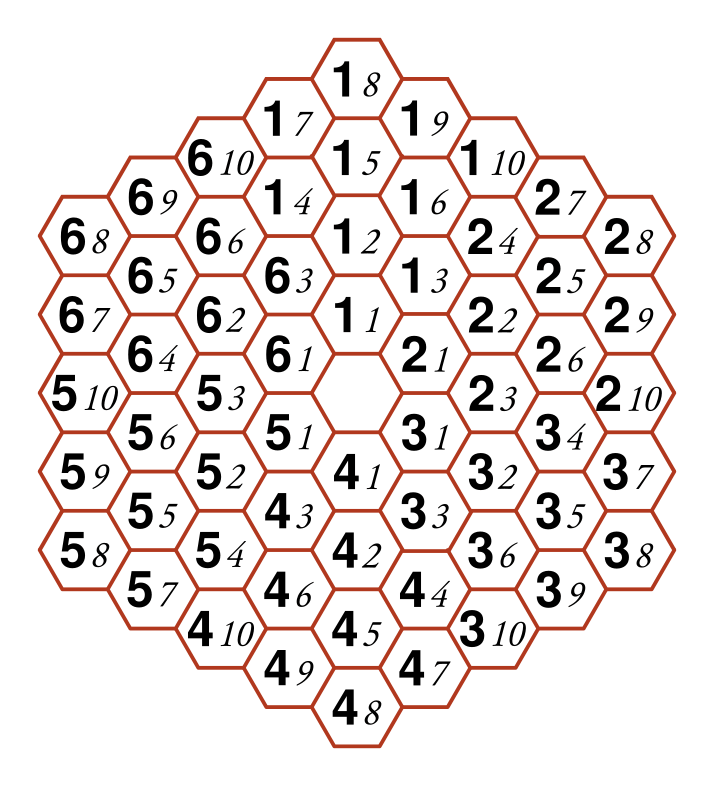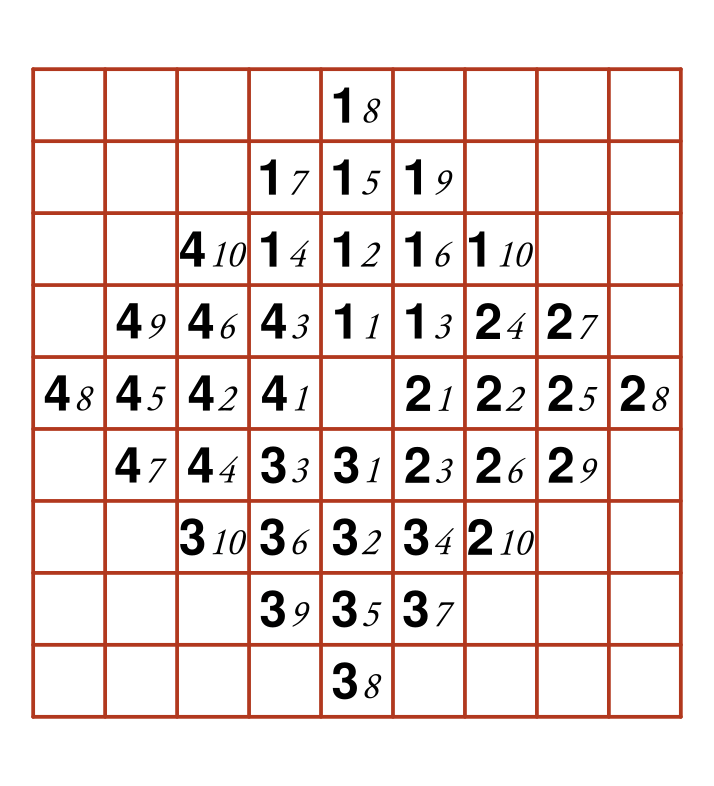It’s a blorb principle to prep out a region to explore before play starts, and there are many DMs out there that have managed to do that.
Personally, I’ve gotten overwhelmed everytime I’ve tried to do that, except when using those big modules where all that work is ready-made, but even them can feel too small.
I don’t want to expand randomly as we go either, because if everything is randomly rolled as you go along, where’s the agency? South becomes the same as north becomes the same as west because wherever you go, the dice are furnishing for you, so the choice about where to go matters less.
So the compromise I wanted is that I do want to be able add new stuff to the sandbox, so that the campaign can be never-ending, but I don’t want tamper with what’s just around the corner. If I’ve got to add, I’d rather add stuff that’s “further beyond the current horizon”. Things not in this dungeon or on this island, but in other dungeons and on other islands.
I hadn’t been able to solve this for years now, but a few years ago I finally had the epiphany. What is it that creates the agency in where you choose to go? Information, right? Rumours!
So I’ve crafted an ever-growing rumor table and I use that to place ruins, dungeons or other adventure sites.
You need a region map; make, generate, or use a published setting. At this point I’d get caught up in trying to detail every hex and never get started. But that’s what the quest queue solves.
You can place as much as you want to before the game starts, that’s just great & gravy, this “quest queue” approach doesn’t preclude that. If you can place it all, that’s great, but whenever I tried it I’d get burnt out and give up.
For the sake of explaining this clearly, let’s use cards. I’ll explain how to do it in a paper notebook at the end, and if you do digital you can probably figure out a way, but to first understand the system, the explanation uses cards, which can be note cards or index cards or scrap paper.
Each card is a module-specific rumor list all of its own. (And when I have homebrewed regions or subregions, they work the same way, they get rumor cards, too.)
A card can have a single rumor, or more commonly, several rumors with instructions on the card; the card can be things like “Roll on the encounter table on page such-and-such in this-or-that book”, or the card can have some numbered rumors listed directly so I can roll right there on the card.
One set of rumor cards is called the buzz. It can start empty, that’s fine. Every location referred to on a buzz card, I as DM must have committed to a canonical location for. I can’t be moving it around schrödingerly.
The other set of rumor cards is called the quest queue. I’m gonna need at least one such cards to start the campaign, but more is better.
If I get a new module, like “The Dungeon of Example Horrors”, and think “this looks cool”, I can grab an empty card and write down instructions on that card on the rumors and hooks for that site, like “Random d10 rumor on p7 of The Dungeon of Example Horrors”.
I optionally can place that dungeon on my campaign map right then and there, and I often do, especially if I’m I making homebrew stuff rather than using modules (although I mostly do use modules). Maybe there’s only one obvious place for it to go, for example if it’s an island and you have an island if that perfect size already.
When the party manages to find a new rumor, first determine which set of cards to use: the buzz, or the quest queue.
If one of those two card sets is empty, use the other.
If both sets have cards, I roll a die to select which of the two card sets to use. I use a 70% chance of buzz, 30% chance of quest queue.
Pulling a buzz card is easy; just give them one of the rumors off the card; if the card still has any rumors left put it back in the buzz, otherwise archive it, it’s no longer useful for the campaign.
If I pull a quest queue card, first of all I might to place some locations (see below). Then it’s the same as a buzz card: they get a rumor. The card then goes among the buzz cards, not back into the quest queue.
Some quest queue cards’ locations are already placed, but for those that hadn’t been placed by the time that card gets pulled, it’s too late for me as DM to decide freely. In that case, I can roll randomly to determine a location.
Now, when determining locations, I look at the level tier of the newly activated adventure site (not the tier that the party currently is at). By “tier”, I mean a coarse-grained chunk of levels; like “tier 2 is levels 5 to 10” or whatever.
For example, when placing low-level stuff you might be working with six-mile hexes, and when placing mid tier stuff maybe you’re using 120 mile squares. I’ve made both square & hex versions of a way of rolling “random location” with a d10 for distance and a d6 or a d4 for direction.


When the campaign starts, I center these at the starting location.
Then over the years as the campaign shifts focus to other regions, I can move the center. I don’t want to automatically move it to wherever the party currently is, but in the natural ebb and flow of TPKs and new level one parties getting rolled up, sometimes what’s “the starting location” for a campaign should change.
Of course the campaign can also have other things going on.
The cards don’t all have to be focused on adding a region to explore. You can have things like bounties, military orders, missions from the clergy or thieves’ guild.
You can also use the cards in parallel with things like a faction game.
This is fun, but it’s something the quest queue can’t handle easily.
You can mitigate this in two ways:
The first mitigation is a lot of work and even then you might miss spots (unless you prep the entire region, which would be super awesome but I was never able to, especially given how freaking huge our adventuring regions are) and the second mitigation is unsatisfying given the agency issues mentioned earlier (i.e. if north is random and south is random, north and south becomes the same), but using some of a, some of b, or some of both, that can complement the buzz and quest queue system nicely.
If you want to add stuff that absolutely is local only, add it directly to the buzz—be careful here, because you don’t want to get into “prepping immediately upcoming stuff” because that can lead to an unblorby Gromit railroad.
There’s two opposite problems that can happen when there’s too much buzz.
When there’s too many rumors pointing to stuff the players already are bored of and know, you can weed out some of the more irrelevant or boring rumors off that card, or scratch the card entirely.
Conversely, when there are two many new locations being added all the time while you already have an overwhelming plethora of buzz locations to explore and hear rumors about, you might want to weight the chance of pulling a quest queue card down to 5% or even 0%.
Also when I didn’t have all my books when I was moving, I only used the buzz and didn’t add any new stuff. The 70%/30% split can be something that the characters can influence too, if they really are asking specifically for local stuff or remote stuff you can weigh it.
Another problem I’ve had is getting so interested in a local region that I forget to use the buzz/QQ cards for that place and instead just roll on that region’s rumor table directly since the players are in there and are asking for stuff. I forget that rumors can and should travel far and wide.
This has been a tension for my players who can get frustrated only hearing local stuff, and similarly frustrated when they’re only hearing remote stuff that they have no chance to affect when their plates are super full here. I think I’m gonna try giving them “local rumors” alongside a rumor that has a chance to be local or more remote, using the buzz/QQ system.
The DM has three jobs between sessions:
One way my first couple of sandbox games tended to peter out was every location had been pretty much exhausted, exploration wise. It always felt so wrong to add things after the game has started. But the quest queue solved this for me.
That said, not all campaign growth needs to be about new locations; you can also add explorable & agential situations, like relationship maps and whodunnits, or run faction games or party-driven projects.
One way to do this in a paper notebook would be to have a “card” be a numbered page or entry in the notebook that you can reference, and the “sets” are lists of references to such entries. “Picking a random card” becomes rolling randomly off the list.